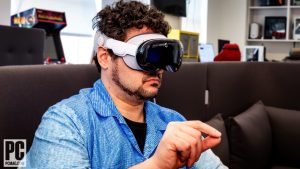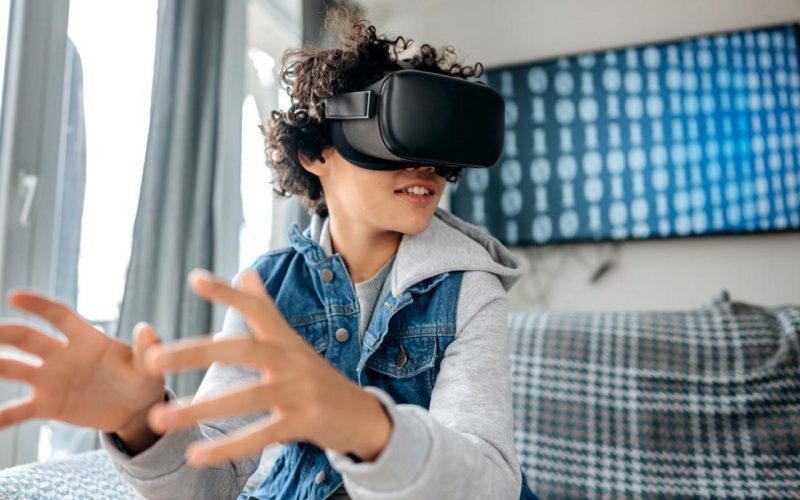Top Virtual Reality Headsets: An In-Depth Analysis
Virtual Reality (VR) has transformed the way we interact with digital environments, offering immersive experiences that range from gaming to training simulations. As VR technology advances, a variety of headsets have emerged, each with its own set of features, advantages, and limitations. In this article, we’ll explore the top VR headsets currently available, provide a detailed analysis of their specifications, and compare them to help you find the best fit for your needs.

-
Introduction to Virtual Reality Headsets
Virtual Reality headsets are devices worn on the head that immerse the user in a 3D virtual environment. They come equipped with screens, lenses, and sensors that track head movements, allowing users to interact with virtual worlds in a natural and intuitive way. With the evolution of VR technology, headsets have become more sophisticated, offering higher resolution displays, better field of view, and more accurate tracking.
-
Key Factors to Consider When Choosing a VR Headset
2.1 Resolution and Display Quality
The resolution of a VR headset affects the clarity of the images and text within the virtual environment. Higher resolution displays reduce the “screen door effect,” where users can see the grid of pixels. Quality displays provide a more immersive experience and reduce eye strain.
2.2 Field of View (FOV)
Field of View refers to the extent of the virtual environment that the user can see without moving their head. A wider FOV enhances immersion by allowing users to take in more of the virtual world at once.
2.3 Tracking and Controllers
Effective tracking systems and responsive controllers are crucial for an immersive VR experience. Tracking systems may be inside-out (using sensors on the headset) or outside-in (using external sensors), while controllers enable interaction with the virtual environment.
2.4 Comfort and Ergonomics
Comfort is essential for extended VR sessions. A well-designed headset should have adjustable straps, cushioning, and a lightweight build to reduce fatigue and discomfort.
2.5 Compatibility and Content
Compatibility with various platforms (e.g., PC, consoles) and the availability of content (games, applications) are important factors. A wide range of compatible content ensures that users get the most out of their VR headset.
-
Top Virtual Reality Headsets
3.1 Meta Quest 3
Overview: The Meta Quest 3 is an advanced standalone VR headset that offers a blend of powerful hardware and a wide range of applications.
- Resolution: 2064 x 2208 per eye
- Field of View: Approximately 110 degrees
- Tracking: Inside-out tracking with integrated sensors
- Controllers: Meta Touch Plus controllers with haptic feedback
- Comfort: Adjustable head strap and lightweight design
- Compatibility: Compatible with Meta’s VR ecosystem and a selection of PC VR games via Air Link
3.2 HTC Vive Pro 2
Overview: The HTC Vive Pro 2 is known for its high-resolution display and professional-grade tracking system, making it ideal for high-end VR experiences and development.
- Resolution: 2448 x 2448 per eye
- Field of View: 120 degrees
- Tracking: External SteamVR base stations for precise tracking
- Controllers: HTC Vive controllers with precise tracking
- Comfort: Adjustable head strap and cushioning
- Compatibility: Works with SteamVR and a wide range of VR applications
3.3 PlayStation VR2
Overview: The PlayStation VR2 is designed specifically for PlayStation 5, offering an immersive gaming experience with high-quality visuals and exclusive content.
- Resolution: 2000 x 2040 per eye
- Field of View: Approximately 110 degrees
- Tracking: Inside-out tracking with built-in sensors
- Controllers: PS VR2 Sense controllers with advanced haptic feedback
- Comfort: Adjustable head strap and ergonomic design
- Compatibility: Exclusively compatible with PlayStation 5
3.4 Valve Index
Overview: The Valve Index is known for its high refresh rate and precise tracking, making it a top choice for enthusiasts and developers seeking high-fidelity VR experiences.
- Resolution: 1440 x 1600 per eye
- Field of View: Approximately 130 degrees
- Tracking: External base stations for precise tracking
- Controllers: Valve Index controllers with finger tracking
- Comfort: Adjustable head strap with high-quality padding
- Compatibility: Works with SteamVR and a broad range of VR content
-
Comparative Analysis
4.1 Specification Table
| Feature | Meta Quest 3 | HTC Vive Pro 2 | PlayStation VR2 | Valve Index |
| Resolution | 2064 x 2208 per eye | 2448 x 2448 per eye | 2000 x 2040 per eye | 1440 x 1600 per eye |
| Field of View | ~110 degrees | 120 degrees | ~110 degrees | ~130 degrees |
| Tracking | Inside-out | External | Inside-out | External |
| Controllers | Meta Touch Plus | HTC Vive | PS VR2 Sense | Valve Index |
| Comfort | Adjustable | Adjustable | Adjustable | Adjustable |
| Compatibility | Meta ecosystem, PC VR via Air Link | SteamVR | PlayStation 5 | SteamVR |
4.2 Analysis Table
| Headset | Strengths | Weaknesses |
| Meta Quest 3 | Standalone, high resolution, lightweight | Limited to Meta’s ecosystem, lower FOV than some competitors |
| HTC Vive Pro 2 | High resolution, wide FOV, professional tracking | Requires external sensors, higher cost |
| PlayStation VR2 | Designed for PlayStation 5, exclusive content | Limited to PS5, lower resolution compared to some competitors |
| Valve Index | High refresh rate, precise tracking, wide FOV | Requires external sensors, high cost |
-
Conclusion
Choosing the right VR headset depends on your specific needs and preferences. The Meta Quest 3 offers a versatile and standalone solution, ideal for users looking for an all-in-one system with access to a wide range of applications. The HTC Vive Pro 2 excels in resolution and professional tracking, making it suitable for high-end users and developers. The PlayStation VR2 is a great choice for PlayStation 5 owners seeking exclusive content and a high-quality experience. Lastly, the Valve Index stands out for its refresh rate and precise tracking, catering to enthusiasts and developers who prioritize performance.
In summary, each headset has its unique strengths and limitations. By evaluating these factors, you can choose the VR headset that best aligns with your requirements and preferences, ensuring an immersive and enjoyable virtual reality experience.










